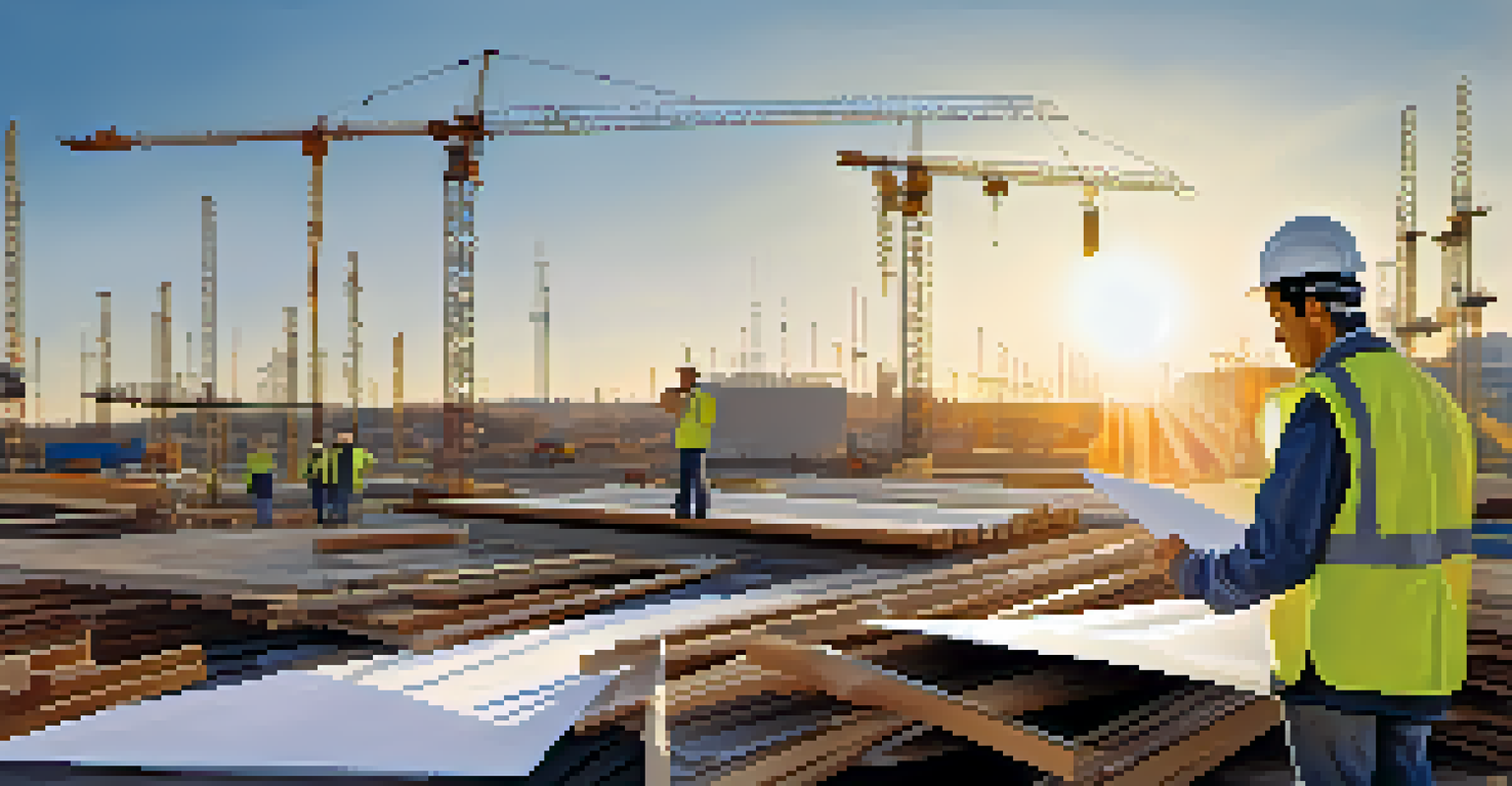Investment in Infrastructure: Historic Trends and Future Outlook

Understanding Infrastructure Investment and Its Importance
Infrastructure investment refers to the funds allocated for building and maintaining essential facilities such as roads, bridges, and utilities. These projects are critical as they support economic growth, improve quality of life, and create jobs. A well-developed infrastructure system can enhance efficiency and productivity across various sectors.
Infrastructure is the backbone of our economy, a foundation upon which society builds its future.
Historically, countries that prioritized infrastructure saw significant long-term benefits. For example, during the post-World War II era, the United States invested heavily in highways, leading to suburban expansion and economic prosperity. This demonstrates how infrastructure is not just about physical structures but also about enabling social and economic progress.
As we look forward, the importance of infrastructure investment remains paramount. With the rise of smart cities and sustainable initiatives, future investments are likely to focus on eco-friendly technologies and resilient systems that can withstand the challenges posed by climate change.
Historic Trends in Infrastructure Investment: A Retrospective
Looking back, infrastructure investment has evolved significantly over the decades. In the mid-20th century, many nations focused on building foundational structures like highways and bridges, which were crucial for industrial growth. These projects laid the groundwork for modern economies and shaped the landscapes we see today.

In recent years, however, investment trends have shifted. There's been a notable increase in funding for renewable energy sources and public transportation systems, reflecting a growing awareness of environmental concerns. For instance, countries like Germany have made substantial investments in their rail systems to promote sustainable travel.
Infrastructure Investment Drives Growth
Investing in infrastructure not only supports economic expansion but also enhances quality of life and job creation.
Moreover, the digital revolution has also influenced infrastructure investment. With the rise of the internet and technology, there’s a greater emphasis on building data centers and expanding broadband access, ensuring that communities stay connected in an increasingly digital world.
Key Drivers of Infrastructure Investment: What Fuels Growth?
Several factors drive infrastructure investment, including population growth, urbanization, and technological advancements. As more people move to cities, the demand for effective transportation, housing, and utilities escalates. This trend necessitates significant investments in infrastructure to support burgeoning populations.
The best way to predict the future is to create it.
Government policies and funding also play a crucial role in infrastructure development. Initiatives such as the Infrastructure Investment and Jobs Act in the U.S. highlight how legislative measures can mobilize resources and prioritize projects that need immediate attention. This creates a ripple effect, encouraging private investment as well.
Lastly, the rise of public-private partnerships (PPPs) has become a vital mechanism for funding infrastructure projects. By combining public resources with private expertise and investment, these partnerships can tackle large-scale projects more efficiently, leading to better outcomes for communities.
Challenges Facing Infrastructure Investment Today
Despite the pressing need for infrastructure investment, several challenges hinder progress. One major issue is the lack of adequate funding, as many governments face budget constraints and competing priorities. This often results in delays or scaling back of essential projects, which can have long-term repercussions.
Additionally, regulatory hurdles can complicate infrastructure development. Navigating through various approvals, permits, and environmental assessments can slow down projects, frustrating stakeholders involved. Streamlining these processes is crucial for timely implementation.
Sustainability is Key for Future Projects
The growing focus on sustainable practices in infrastructure investment reflects the urgent need to address climate change.
Finally, the workforce shortage in the construction and engineering sectors poses a significant challenge. As experienced professionals retire, there is a pressing need to attract and train a new generation of workers. Without a skilled workforce, infrastructure projects may struggle to meet deadlines and quality standards.
The Role of Technology in Future Infrastructure Investment
Technology is set to play a transformative role in the future of infrastructure investment. Innovations such as smart sensors and data analytics can enhance the efficiency of infrastructure systems, allowing for real-time monitoring and maintenance. This proactive approach can significantly reduce costs and improve service delivery.
Moreover, advancements in construction technology, like 3D printing and modular building, promise to streamline the building process. These techniques can reduce waste, shorten construction times, and lower costs, making it easier to deliver projects on budget and schedule.
As we move towards a more connected world, investments in digital infrastructure will be crucial. Expanding broadband access and enhancing cybersecurity measures will ensure that communities are not only connected but also safe in an increasingly digital landscape.
Sustainable Infrastructure Investment: A Growing Priority
Sustainability is becoming a central theme in infrastructure investment discussions. With the rising awareness of climate change, there is an urgent need to develop infrastructure that minimizes environmental impact. This includes investing in renewable energy, energy-efficient buildings, and sustainable transportation systems.
For example, countries are increasingly adopting green building standards, which focus on reducing energy consumption and utilizing eco-friendly materials. This shift not only benefits the environment but can also lead to long-term cost savings for businesses and consumers alike.
Technology Transforms Infrastructure
Innovations like smart sensors and advanced construction methods are set to improve efficiency and reduce costs in infrastructure projects.
Furthermore, sustainable infrastructure investments often attract additional funding as investors become more conscious of their environmental, social, and governance (ESG) impacts. This trend indicates that future infrastructure projects will likely prioritize sustainability, aligning economic growth with environmental stewardship.
The Future Outlook for Infrastructure Investment: What Lies Ahead
As we look to the future, infrastructure investment is anticipated to grow, driven by both necessity and opportunity. With many aging structures needing repair and modernization, governments and private sectors alike are poised to invest significantly in revitalizing infrastructure. This renewal can foster economic growth and improve public safety.
Additionally, global initiatives aimed at reducing carbon emissions will likely influence infrastructure projects. As countries commit to sustainability goals, investments will shift toward greener solutions, paving the way for innovative projects that address both infrastructure needs and climate challenges.

In conclusion, the future of infrastructure investment is bright, with opportunities for innovation and sustainable growth. By addressing current challenges and embracing new technologies, we can build a resilient and efficient infrastructure system that meets the needs of future generations.